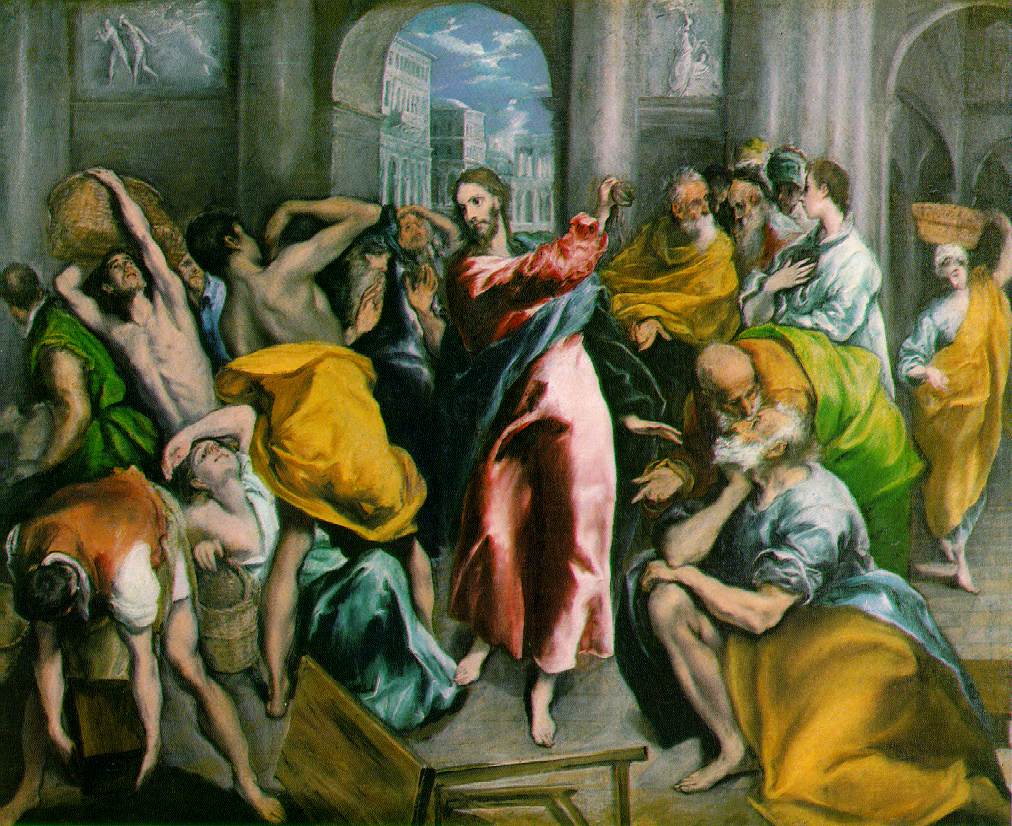In protest against that annual orgy of conspicuous consumption known as the Christmas shopping season, next Thursday has apparently been designated World Buy Nothing Day. This week’s appropriately anti-materialistic picture is El Greco’s Christ Driving the Traders from the Temple. Painted in Toledo in about 1600, when the artist was about 60 years old, it hangs in the National Gallery.
The painting’s subject is most fully described in the Gospel of St John (2, 13-16): “Jesus went up to Jerusalem; And found in the temple those that sold oxen and sheep and doves, and the changers of money sitting; And when he had made a scourge of small cords, he drove them all out of the temple, and the sheep, and the oxen; and poured out the changers’ money, and overthrew the tables; And said unto them that sold doves, Take these things hence; make not my Father’s house an house of merchandise.
El Greco eschews the mass of circumstantial detail in the gospel story. He shows no oxen, no sheep, no sellers of doves. The traders have been abbreviated to a few cringing and distraught figures, while the moneychangers have been reduced to a single, stooping man, straining to lift a casket of coins next to an upended table. The interior of the temple is lit by a flickering, otherworldly light, which makes the vividly coloured draperies worn by Christ and those around him crackle with an almost electric visual charge. The painting is less like an actual teeming crowd scene, realistically observed, than like a vision or a dream. The figures are larger than life-size and the scale relationships between them are decidedly illogical (were the kneeling St Peter to stand up, he would dwarf the others like a giant). The scourging figure of Christ stands exactly...


